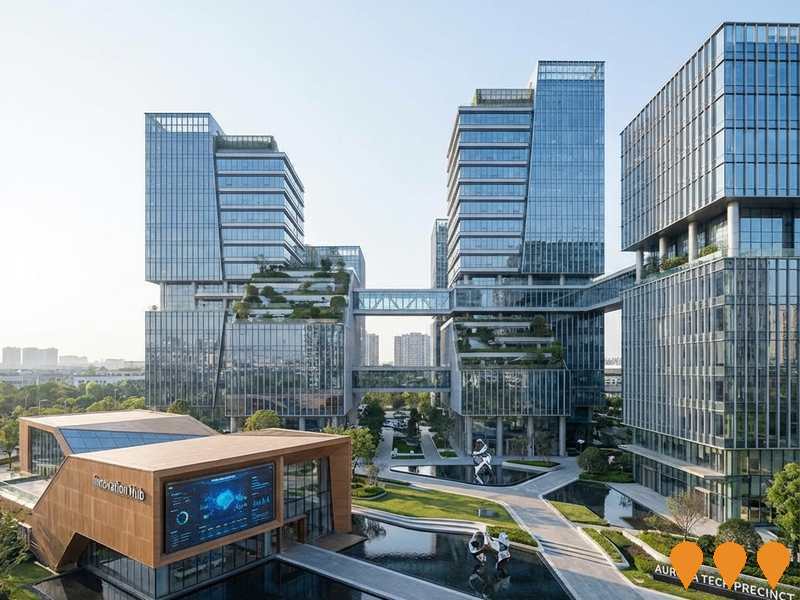Chart Color Schemes
est. as @ -- *
ABS ERP | -- people | --
2021 Census | -- people
Sales Activity
Curious about local property values? Filter the chart to assess the volume and appreciation (including resales) trends and regional comparisons, or scroll to the map below view this information at an individual property level.
Find a Recent Sale
Sales Detail
Population
An assessment of population growth drivers in Young Surrounds reveals an overall ranking slightly below national averages considering recent, and medium term trends
Young Surrounds' population was approximately 7,875 as of November 2025. This reflected an increase of 198 people since the 2021 Census, which reported a population of 7,677 people. The change was inferred from the estimated resident population of 7,779 in June 2024 and an additional 48 validated new addresses since the Census date. This resulted in a density ratio of 1.3 persons per square kilometer. Young Surrounds' growth rate of 2.6% since the census placed it within 1.3 percentage points of its SA3 area's growth rate of 3.9%. Overseas migration contributed approximately 51.4% of overall population gains during recent periods.
AreaSearch adopted ABS/Geoscience Australia projections for each SA2 area, released in 2024 with a base year of 2022. For areas not covered by this data, AreaSearch used NSW State Government's SA2 level projections released in 2022 with a base year of 2021. Growth rates by age group were applied to all areas for the years 2032 to 2041. Future population dynamics anticipated an increase just below Australia's regional median, with Young Surrounds expected to gain 866 persons by 2041, recording a total growth of 9.7% over the 17-year period.
Frequently Asked Questions - Population
Development
AreaSearch analysis of residential development drivers sees Young Surrounds recording a relatively average level of approval activity when compared to local markets analysed countrywide
Young Surrounds has averaged approximately 16 new dwelling approvals annually over the past five financial years, from FY21 to FY25. During this period, a total of 82 homes were approved, with an additional 9 approved so far in FY26. On average, each dwelling has contributed around 2.8 new residents per year over these five years, indicating strong demand that supports property values.
The average construction cost value for new homes is $336,000. In the current financial year, there have been $14.7 million in commercial development approvals, suggesting balanced commercial development activity. Compared to the Rest of NSW, Young Surrounds has roughly half the rate of new dwelling approvals per person. Nationally, it ranks at the 45th percentile among assessed areas, indicating limited buyer options while strengthening demand for established homes.
However, building activity has accelerated in recent years. The majority of new development consists of standalone homes (93.0%), with medium and high-density housing making up the remaining 7.0%, preserving the area's low-density nature and attracting space-seeking buyers. The estimated population per dwelling approval is 391 people. Population forecasts indicate that Young Surrounds will gain approximately 760 residents by 2041. If current development rates continue, housing supply may struggle to keep pace with population growth, potentially increasing buyer competition and supporting price increases.
Frequently Asked Questions - Development
Infrastructure
Young Surrounds has limited levels of nearby infrastructure activity, ranking in the 0thth percentile nationally
Changes in local infrastructure significantly affect an area's performance. AreaSearch has identified 29 projects likely to impact the area. Notable ones include Harden to Boorowa Pipeline, Smart Water Meter Replacement Program, Burrangong Creek Bridge Duplication, and Hill Street Subdivision Young. The following list details those most relevant.
Professional plan users can use the search below to filter and access additional projects.
INFRASTRUCTURE SEARCH
 Denotes AI-based impression for illustrative purposes only, not to be taken as definitive under any circumstances. Please follow links and conduct other investigations from the project's source for actual imagery. Developers and project owners wishing us to use original imagery please Contact Us and we will do so.
Denotes AI-based impression for illustrative purposes only, not to be taken as definitive under any circumstances. Please follow links and conduct other investigations from the project's source for actual imagery. Developers and project owners wishing us to use original imagery please Contact Us and we will do so.
Frequently Asked Questions - Infrastructure
Young Sewage Treatment Plant Upgrade
Replacement of the existing sewage treatment plant with a modern 12,000 EP facility to enhance treatment processes and enable reuse of treated water for irrigation of public parks and fields, reducing reliance on potable water.

Inland Rail - Illabo to Stockinbingal
This 37 km section of Inland Rail creates a new direct route from east of Illabo tracking north to Stockinbingal, bypassing Cootamundra and Bethungra and the Bethungra Spiral. The project has received all primary environmental approvals from NSW and Australian governments, John Holland was appointed in Oct 2024 to design and construct, enabling works and site investigations have been underway through 2025, a 350 person workers accommodation facility is being built at Stockinbingal, and major construction is expected across many sites from the second half of 2025.
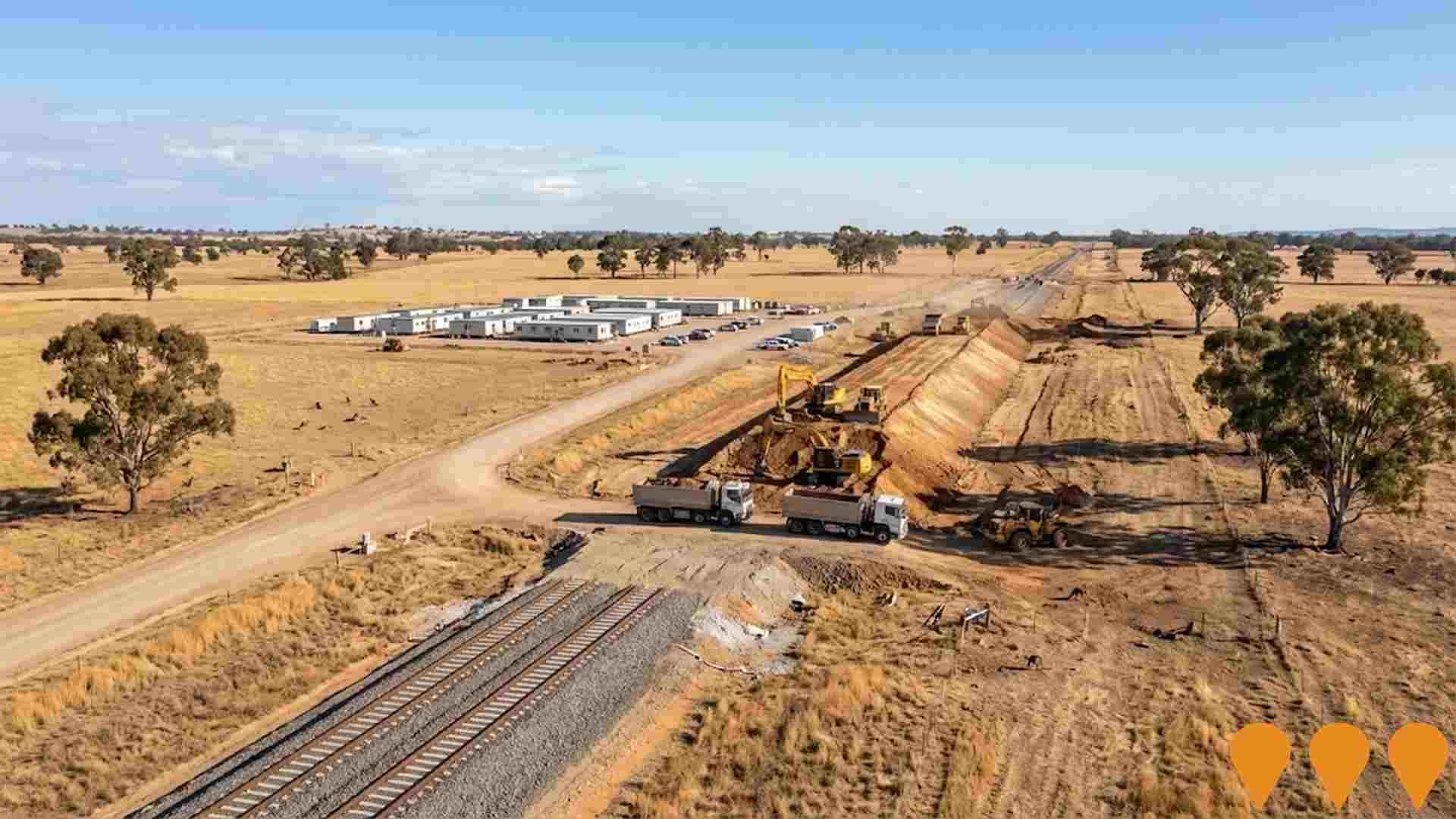
Young High School and New Joint Use Library and Community Facility Upgrade
The project delivered a new 2.5-storey joint use library and community facility integrated with Young High School and Carrington Park. Key features include new learning spaces, reading and study areas, technology facilities, children's activity area, youth wellbeing hub, arts floor with gallery, coffee bar, Wiradjuri learning centre, staff hub, canteen, student toilets, and landscaping.
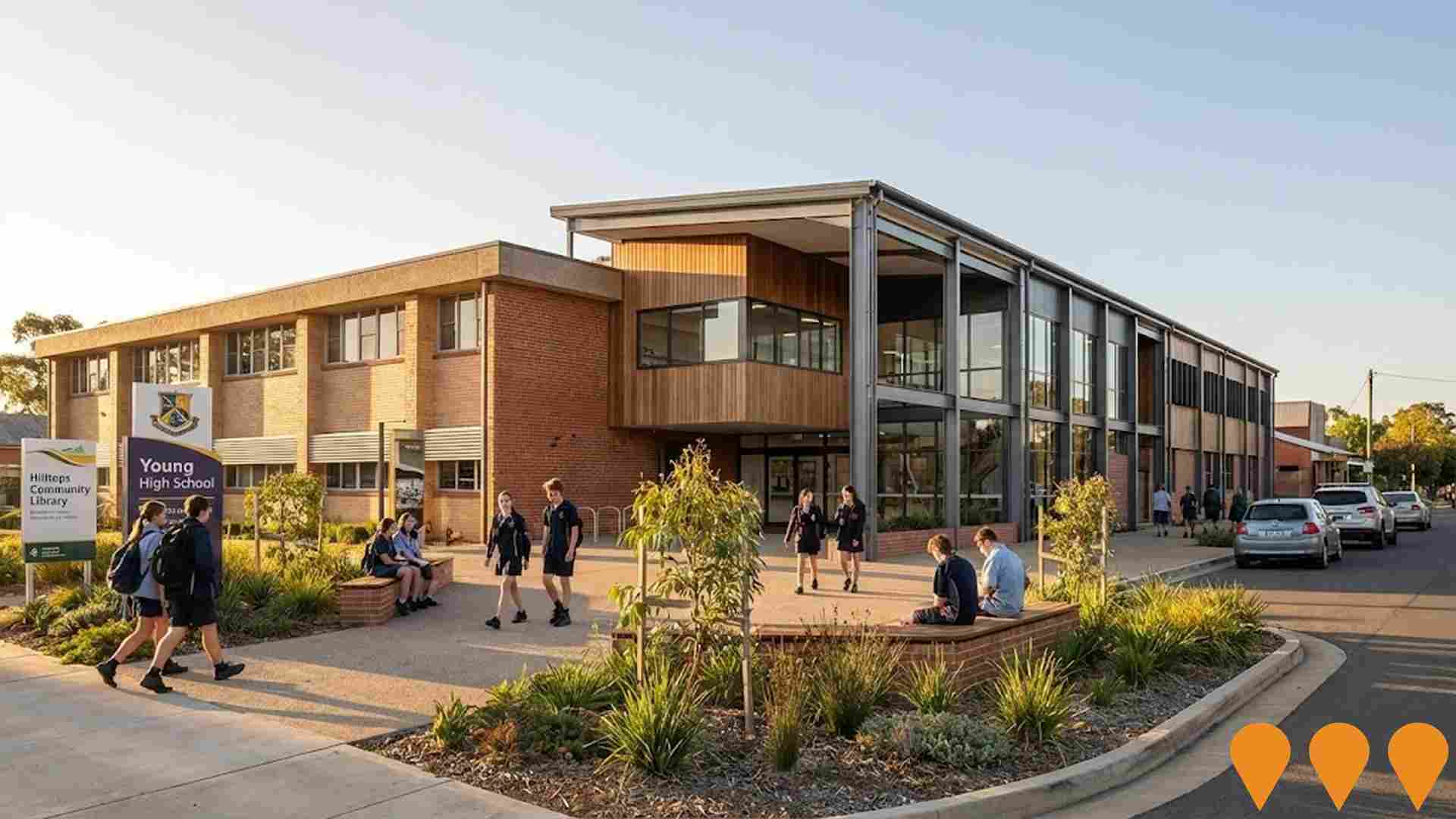
Harden Sewage Treatment Plant Upgrade
Remediation and upgrade of the Harden sewage treatment plant to restore and improve performance following storm and flood impacts. Works included rehabilitation and realignment of treatment ponds, construction of spillways, and upgrades to recycled water rising mains. Council indicated works commencing December 2024 with completion targeted for April 2025; project is now treated as complete.

Boorowa Residential Subdivision (Long Street)
128-lot residential subdivision transforming 4 lots into 128 new residential blocks between 96-148 Long Street, Boorowa. Includes new roads, infrastructure works, and tree removal. The development aims to provide accessible and affordable housing options in Boorowa.
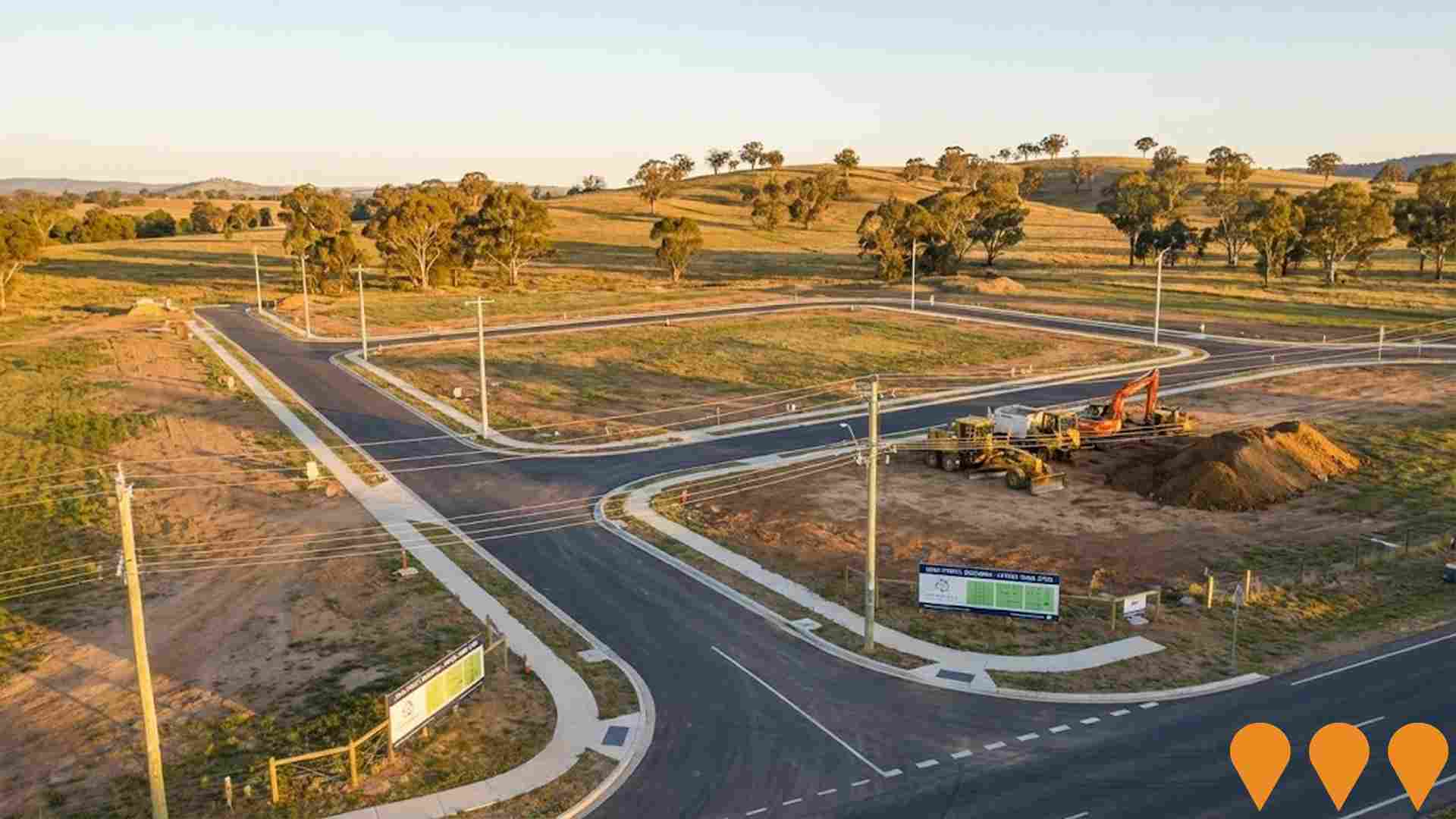
Harden to Boorowa Pipeline
New water supply pipeline connecting Harden and Boorowa water systems to improve water security and supply resilience for both communities. Project includes pumping stations, storage facilities, and approximately 25km of pipeline infrastructure to enable water sharing between the two towns.

Young Stormwater Infrastructure Upgrades
Comprehensive stormwater infrastructure improvements throughout Young township including drainage upgrades, flood mitigation measures, and water quality treatment systems. Project aims to reduce flood risk and improve environmental outcomes for waterways.

Apollo Fabrication Group Expansion
Family-owned steel fabrication business expanding operations with a staged long-term growth strategy. The first stage includes construction of a fully enclosed 4,000m2 loading and storage facility to boost production capacity, streamline logistics, and reduce environmental impacts such as noise and dust. Aims to nearly double workforce from 70 to over 130 employees over the next decade.
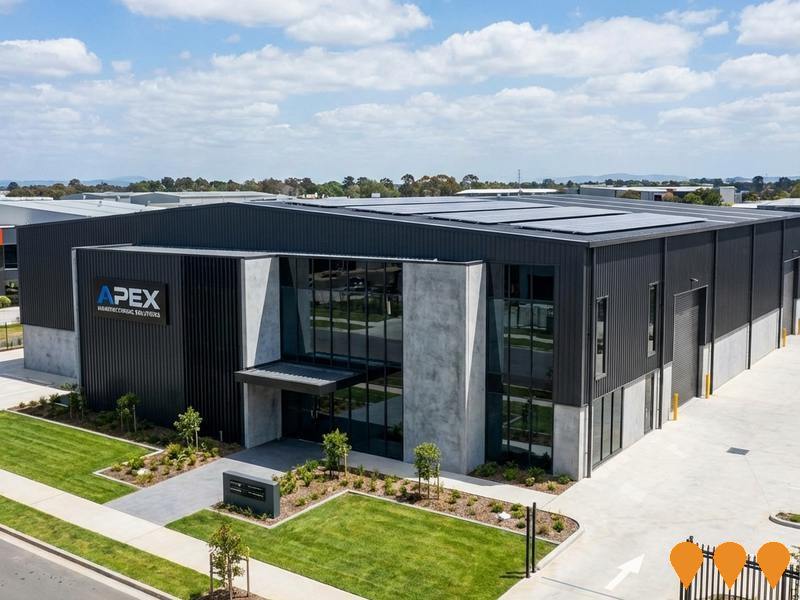
Employment
While Young Surrounds retains a healthy unemployment rate of 3.2%, recent employment declines have impacted its national performance ranking
Young Surrounds has a balanced workforce comprising white and blue collar jobs across various sectors, with an unemployment rate of 3.2%. As of June 2025, 3,617 residents are employed, with an unemployment rate of 0.4% lower than Rest of NSW's rate of 3.7%.
Workforce participation is slightly below the regional average at 53.3%. Key employment sectors include agriculture, forestry & fishing, health care & social assistance, and education & training. The area has a strong specialization in agriculture, forestry & fishing (6.2 times the regional level), but lower representation in health care & social assistance (11.0% vs 16.9%). Local employment opportunities appear limited based on Census data comparison of working population versus resident population.
Between June 2024 and June 2025, the labour force decreased by 3.6%, while employment declined by 3.7%, maintaining a stable unemployment rate. In contrast, Rest of NSW saw employment fall by 0.1%, labour force expand by 0.3%, and unemployment rise by 0.4 percentage points. Jobs and Skills Australia's national employment forecasts from May 2025 project overall growth of 6.6% over five years and 13.7% over ten years. Applying these projections to Young Surrounds' employment mix suggests local growth of approximately 5.1% over five years and 11.3% over ten years, though this is a simple extrapolation for illustrative purposes only.
Frequently Asked Questions - Employment
Income
Income figures position the area below 75% of locations analysed nationally by AreaSearch
AreaSearch's latest postcode level ATO data for financial year 2022 shows Young Surrounds' median income among taxpayers is $46,362, with an average of $56,462. This is below the national average. Rest of NSW has a median income of $49,459 and an average of $62,998. Based on Wage Price Index growth of 12.61% since financial year 2022, current estimates for Young Surrounds would be approximately $52,208 (median) and $63,582 (average) as of September 2025. The 2021 Census data indicates household, family, and personal incomes in Young Surrounds fall between the 11th and 19th percentiles nationally. The earnings profile shows that 26.9% of locals (2,118 people) earn between $1,500 - 2,999, similar to metropolitan regions where 29.9% occupy this range. Housing costs are modest, with 90.3% of income retained, but total disposable income ranks at just the 18th percentile nationally.
Frequently Asked Questions - Income
Housing
Young Surrounds is characterized by a predominantly suburban housing profile, with above-average rates of outright home ownership
Young Surrounds' dwelling structure, as per the latest Census, consisted of 95.6% houses and 4.4% other dwellings (semi-detached, apartments, 'other'). In comparison, Non-Metro NSW had 93.2% houses and 6.8% other dwellings. Home ownership in Young Surrounds stood at 52.6%, with mortgaged dwellings at 29.1% and rented ones at 18.3%. The median monthly mortgage repayment was $1,083, lower than Non-Metro NSW's average of $1,699. The median weekly rent figure in Young Surrounds was recorded at $220, compared to Non-Metro NSW's $270. Nationally, mortgage repayments were significantly lower ($1,863) and rents substantially below the national figure of $375.
Frequently Asked Questions - Housing
Household Composition
Young Surrounds features high concentrations of lone person households, with a lower-than-average median household size
Family households account for 66.6% of all households, including 23.8% couples with children, 33.7% couples without children, and 8.3% single parent families. Non-family households make up the remaining 33.4%, with lone person households at 31.2% and group households comprising 2.2% of the total. The median household size is 2.3 people, which is smaller than the Rest of NSW average of 2.5.
Frequently Asked Questions - Households
Local Schools & Education
Young Surrounds faces educational challenges, with performance metrics placing it in the bottom quartile of areas assessed nationally
The area's university qualification rate is 16.0%, significantly lower than the NSW average of 32.2%. This indicates a need for targeted educational initiatives. Bachelor degrees are most common at 12.4%, followed by postgraduate qualifications (2.3%) and graduate diplomas (1.3%). Vocational credentials are prominent, with 39.0% of residents aged 15+ holding them, including advanced diplomas (10.0%) and certificates (29.0%).
Educational participation is high at 27.3%, comprising 11.3% in primary education, 7.6% in secondary education, and 2.1% in tertiary education. Eleven schools serve 836 students, with typical Australian school conditions (ICSEA: 952) and balanced educational opportunities. The schools include 9 primary, 1 secondary, and 1 K-12 school. Note that for schools marked 'n/a' for enrolments, please refer to the parent campus.
Frequently Asked Questions - Education
Schools Detail
Nearby Services & Amenities
Transport
Transport servicing is low compared to other areas nationally based on assessment of service frequency, route connectivity and accessibility
Transport analysis shows 415 active transport stops operating within Young Surrounds. These include a mix of train and bus services. They are serviced by 64 individual routes, collectively providing 686 weekly passenger trips.
Transport accessibility is rated as good, with residents typically located 257 meters from the nearest stop. Service frequency averages 98 trips per day across all routes, equating to approximately one weekly trip per individual stop.
Frequently Asked Questions - Transport
Transport Stops Detail
Health
Health performance in Young Surrounds is well below average with prevalence of common health conditions notable across both younger and older age cohorts
Health data shows significant issues affecting Young Shire with high prevalence of common health conditions across both younger and older age groups. Only about 48% (~3,780 people) have private health cover, compared to 53.6% across the Rest of NSW and a national average of 55.3%. The most prevalent medical conditions are arthritis (12.4%) and asthma (9.0%).
About 61.4% report no medical ailments, slightly lower than the 63.6% in the Rest of NSW. The area has a higher proportion of seniors aged 65 and over at 26.3% (2,072 people) compared to 21.4% in the Rest of NSW. Despite this, health outcomes among seniors are better than those of the general population.
Frequently Asked Questions - Health
Cultural Diversity
The latest Census data sees Young Surrounds placing among the least culturally diverse areas in the country when compared across a range of language and cultural background related metrics
Young Surrounds, surveyed in June 2016, showed low cultural diversity: 89.2% were Australian citizens, 92.6% born in Australia, and 96.8% spoke English only at home. Christianity was the dominant religion (71.6%), compared to 61.3% regionally. Ancestry wise, Australians comprised 33.2%, English 32.9%, Irish 12.1%.
Australian Aboriginal were overrepresented at 3.6% vs regional 2.9%, Serbians at 0.3% vs 0.2%, and Lebanese at 0.3% vs 0.7%.
Frequently Asked Questions - Diversity
Age
Young Surrounds hosts an older demographic, ranking in the top quartile nationwide
Young Surrounds has a median age of 49, which is higher than the Rest of NSW figure of 43 and Australia's average of 38 years. Compared to the Rest of NSW average, the 55-64 cohort is notably over-represented in Young Surrounds at 15.7%, while those aged 15-24 are under-represented at 9.2%. Between 2021 and present, the proportion of the population aged 35 to 44 has grown from 9.0% to 9.8%. Conversely, the proportion of those aged 45 to 54 has declined from 12.7% to 11.9%. By 2041, demographic projections show significant shifts in Young Surrounds' age structure. The number of people aged 85 and above is projected to increase markedly by 138 individuals (an increase of 70%), from 196 to 335. Meanwhile, the numbers in the 55-64 age range are expected to fall by 27 people.


